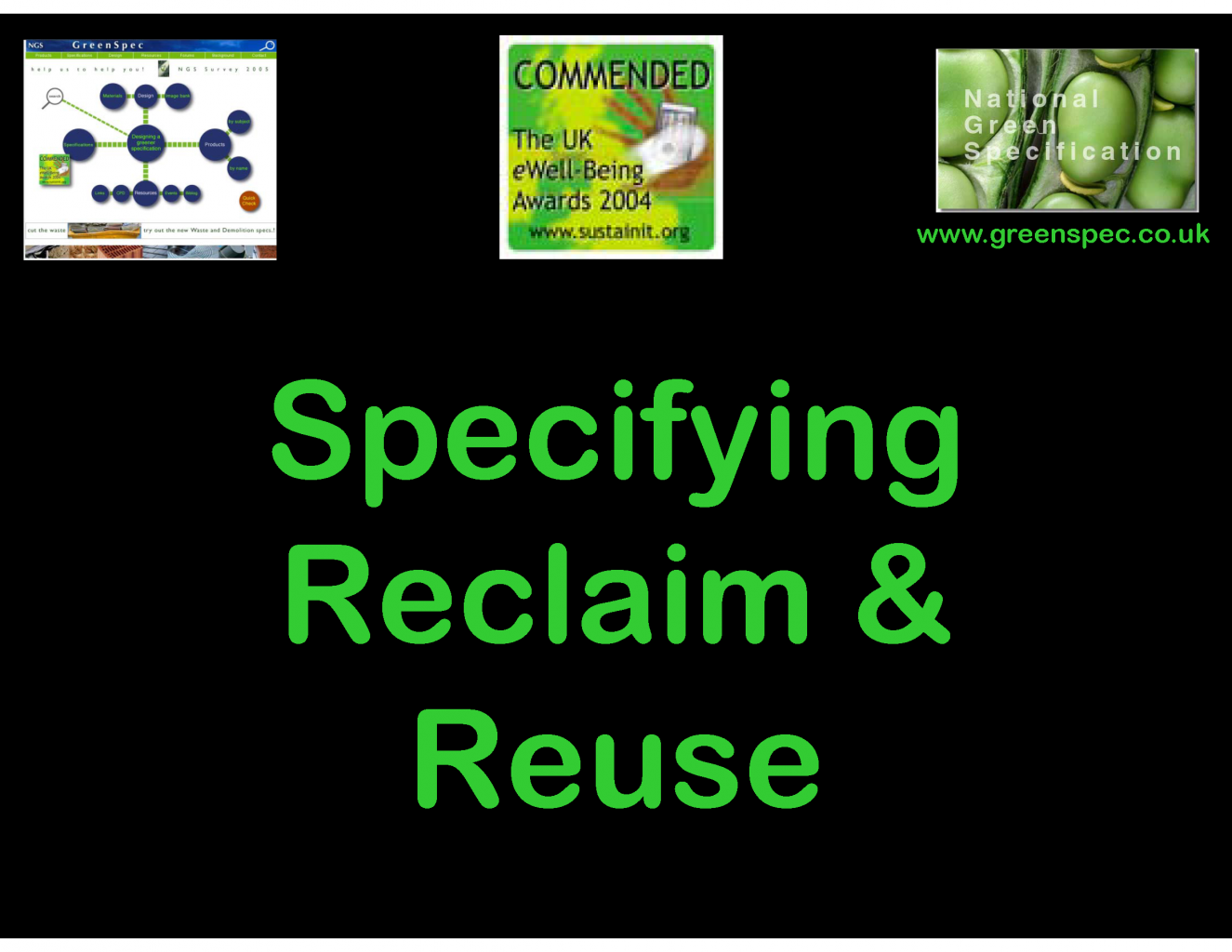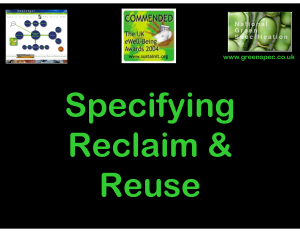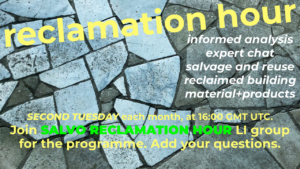
From Waste to Worth: Turning Construction Waste into Circular Materials Guest Post
GBE > Advertise > Collaborate > Services > Guest Posts > G#42737
About:
- This in-depth guest article explores how the UK construction sector can transform its largest waste stream into valuable circular materials.
- It fully aligns with GBE’s HERACEY™ sustainability framework, covering healthy material choices, resource efficiency, embodied carbon reduction, reprocessing methods, reuse strategies, and evidence-based case studies.
Introduction: The Urgent Need for Circularity in Construction
The UK construction industry generates over 120 million tonnes of waste annually—more than any other sector. Recycling rates have improved, but the majority of materials still undergo downcycling or low-value recovery instead of returning to high-value, circular use.
As the UK aims for a net-zero built environment by 2050, the industry must shift from the linear “take–make–waste” model to a fully circular construction economy prioritising:
- Reduction of embodied carbon
- Material reuse and remanufacturing
- Healthier, low-chemistry product choices
- Transparent lifecycle assessment
- Design-for-disassembly
- Regenerative design principles
Around the world, other regions use local policies to advance circularity—such as local law 10/11 Westchester County, which strengthens environmental compliance for building work and emphasises responsible material handling and site practices. This law primarily governs local building safety and permitting requirements, and while not directly tied to circularity, it illustrates how regulatory frameworks can influence material practices.
Although the UK has its own regulatory drivers (PAS 14191, the Environment Act, Waste Regulations, etc.), examining parallel policies helps underline the need for more stringent, circular-focused requirements.
By treating buildings as long-term material banks, the UK can drastically reduce carbon, restore ecosystems, and unlock significant economic value.
What Are Circular Construction Materials?
Circular construction materials are those designed or processed to remain in continuous loops of reuse, recovery, and regeneration without losing structural integrity or environmental quality.
They typically feature:
- Disassemblable fixtures and reversible connections
- Low-embodied-carbon manufacturing
- Healthy, low-toxicity chemistries
- Ability to be remanufactured or upgraded
- Compatibility with material passports and digital tracking
- Proven longevity supported by testing and certification
These materials support a regenerative, zero-waste, low-carbon construction sector and align with multiple HERACEY™ principles—especially Environmental, Resourceful, Appropriate, Competent, and Effective.
Why Circular Materials Matter: Deep Environmental and Social Benefits
1. Reducing Embodied Carbon at Scale
Embodied carbon accounts for up to 50% of whole-life emissions in new UK buildings. Reusing structural steel, timber, façade components, aggregates, and fittings drastically reduces:
- Extraction emissions
- Manufacturing energy
- Transport impacts
- Water consumption
Every tonne of reused material directly prevents new carbon from entering the atmosphere.
Circularity reduces reliance on carbon-intensive, petrochemical-based, and toxic materials. This supports:
- Low-VOC interiors
- Better indoor air quality
- Safer construction environments
- Healthier long-term communities
3. Enhancing Material Security and Local Resilience
Circular systems strengthen UK material independence by:
- Reducing reliance on imported raw materials
- Boosting local manufacturing
- Supporting local jobs
- Mitigating supply-chain volatility
Major Construction Waste Streams Suitable for Circular Reuse
1. Structural and Non-Structural Timber
Reclaimed timber—once inspected, de-nailed, kiln-dried (if required), and graded—can be reused in:
- Structural beams and joists
- Flooring boards
- Doors and internal linings
- Furniture fabrication
- Engineered timber composites
Advantages:
✔ Stores carbon long-term
✔ Avoids synthetic chemical treatments
✔ Often higher quality than modern fast-growth timber
2. Recycled Concrete, Masonry & Aggregates
High-value recovery options include:
- Recycled aggregates meeting BS EN 12620
- Crushed masonry for limecrete
- Secondary aggregates for earth and clay systems
- Cleaned rubble for structural gabions
Advantages:
✔ Reduces quarry extraction
✔ Supports low-carbon mineral systems
✔ Reduces reliance on OPC (CEM I) concrete
3. Scrap Steel and Aluminium
Metals are infinitely recyclable with minimal quality loss.
Reuse potential:
- Structural steel sections (tested & certified)
- Rebar alternatives
- Architectural components
- Façade systems
Advantages:
✔ 75–95% lower embodied carbon
✔ No petrochemicals required
4. Bio-Based Waste Streams
Bio-based by-products include:
- Wood fibre
- Straw
- Hemp shiv
- Cellulose paper waste
These can be transformed into:
- Insulation materials
- Vapour-open panels
- Acoustic boards
- Internal plasters and renders
- These typically include fibres such as wood fibre, cellulose, or straw mixed with lime or clay binders to improve tensile strength, workability, and moisture buffering.
Advantages:
✔ Excellent for indoor air quality
✔ Compatible with lime, clay, and plant-based binders
5. Excavated Soil, Clay & Earth
Recovered earth materials can be reused for:
- Rammed earth walls
- Cob and CobBauge systems
- Earth blocks, including those reinforced with natural fibres
- Natural clay plasters
- Low-carbon flooring solutions
- These include clay-lime floors, stabilised earth floors, and compressed earth sub-bases
Advantages:
✔ Extremely low embodied carbon
✔ No high-chemistry processes
✔ Highly durable and repairable
Circular Manufacturing and Reprocessing Techniques
Mechanical Reprocessing
- Crushing
- Shredding
- Milling
- Sorting
- Deconstruction-based recovery
Ensures clean, graded streams suitable for high-value reuse.
Upcycling to Higher Value
- Broken ceramic → Terrazzo flooring
- Glass fines → Structural glass
- Brick dust → Pigments & lime mortar additives
Low-Carbon Biological Processing
- Mycelium-based composites
- Carbonated waste minerals
- Lime-stabilised aggregates
- Algae-based biopolymers
These innovations drastically reduce energy and chemical inputs.
Evidence-Based Case Study: Steel Reuse in London UK
A major central London commercial redevelopment reused structural steel recovered from a nearby deconstruction (careful demolition reclaiming components for reuse) project
Results:
- 80–90% lower embodied carbon
- Full traceability with digital material passports
- UKCA-compliant testing and certification
- Cost-competitive delivery
- Zero chemical-intensive processing
This case illustrates that circularity is not only feasible—but economically strong and technically reliable.
Challenges Slowing Circular Adoption—and How to Overcome Them
- Limited Reuse Standards and Certification
→ Expand PAS 14191; introduce consistent quality assurance. - Market Misconception That “New is Better”
→ Promote data-backed case studies and embodied-carbon payback periods. - Poor Design-for-Disassembly Practices
→ Encourage reversible fixings, modular designs, and accessible service zones. - Fragmented Material Information
→ Adopt material passports and digital building twins.
Tools, Data, and Measurement for Circular Construction
To meet the Yardstick requirement in HERACEY™, essential tools include:
- Whole-life carbon calculators
- Circularity and reuse indices
- BS EN 15978 lifecycle assessments
- Material passport platforms
- Reuse grading frameworks
- Waste audits and pre-deconstruction surveys
These ensure measurable, transparent, evidence-based design decisions.
The Future of Circular Construction in the UK
The UK is moving toward a closed-loop construction model driven by:
- Net-zero requirements
- Circular economy legislation
- Digital tracking systems
- Growth of material exchange platforms
- Rising demand for healthier, low-carbon buildings
Reclaimed materials will play a defining role in reducing carbon, limiting waste, and strengthening resilience in the built environment.
Conclusion: A Regenerative Path Forward
- Transforming construction waste into circular materials is not just environmentally essential—it’s a strategic opportunity.
- By embracing reuse, minimising embodied carbon, prioritising healthy materials, and integrating circular design from the outset, the UK can transition toward a regenerative, zero-waste future.
- Circularity turns what was once considered “waste” into long-term value, supporting climate goals, economic resilience, ecosystem health, and community wellbeing.
- The future of construction is circular, carbon-smart, and resource-efficient—and the journey begins by turning waste into worth.
GBE Team Guest Author
Name: Preeth Vinod Jethwani
© GBE GBC GRC GIC GGC GBL NGS ASWS Brian Murphy aka BrianSpecMan ******
22nd November 2025
Images:
GBE Team Guest Author
 Name: Preeth Vinod Jethwani
Name: Preeth Vinod Jethwani








© GBE GBC GRC GIC GGC GBL NGS ASWS Brian Murphy aka BrianSpecMan ******
22nd November 2025
See Also:
GBE Guest Posts
- Guest Post (Collaborate) G#40818
- Sustainable Renovation Process (Guest Post) G#42350
- Digital Data Carbon Footprint (Guest Post) G# 42296
- Access ECO4 (Guest Post) G#42579
- Future of Sustainable Insulation: Natural Materials Over Plastics (Guest Post) G#42605
- Circular Construction: Designing for Deconstruction and Material Reuse (Guest Post) G#42629
- Eco-Refurbishment: Turning Old Buildings into Energy-Efficient Homes (Guest Post) G#42642
- Bio-Based Insulation and Its Role in Carbon Reduction (Guest Post) G#42658
- Beyond Bamboo: Exploring Rapidly Renewable Materials for UK Builders (Guest Post) G#42694
- From Waste to Worth: Turning Construction Waste into Circular Materials (Guest post) G#42737 (this page)
- Breathable Walls: The Science of Moisture-Resistant Natural Plasters (Guest Post) G#42732
GBE HERACEY™
- GBE HERACEY (Jargon Buster) G#1429 N#1399
- GBE HERACEY Healthy (Jargon Buster) G#1896 N#1753
GBE Jargon Buster
- Breathing Sheathing Board (Jargon Buster) G#10046
- Breathing Construction Walls (Jargon Buster) G#9336
GBE CPD
GBE CPD Topics
- CDP Topic Refurbishment Retrofit (Navigation) G#1451 N#1419
GBE CPD Titles
- Design To Reduce Waste (TGR Training) G#404 N#405
- Design to Reduce Waste Diagrams (CPD) G#412 N#413
- Material Exchange 4 Specification (CPD) G#308 N#309
- Reclaim Reuse Specification (CPD) G#316 N#317
- RefurbishmentTSBRetrofitForAFuture (CPD) PDF Show
- Retrofit GreenDeal (CPD) N#339
- Retrofit GreenDeal Risks Rev11 (CPD) N#351
- Retrofit Materials and Methods (CPD)
- Surveys Tests Analysis (CPD Lecture) G#389 N#390
- TSB Retrofit for a Future Competition project
- Violet Materials (Materials) G#963 N#983
- Waste Colour Code (CPD) G#409 N#410
- Waste Containers (CPD) N#411
- Waste Cost Reduction (CPD) N#412
- Waste Distribution Centre (CPD) N#414
- Waste Hierarchy 2011 (CPD) G#414 N#415
- Waste Hierarchy 2012 (CPD) N#416
- Waste Images Skips (CPD) N#417
- Waste Refurbishment Hierarchy (CPD) N#418
GBE Issues
- GBE Waste (Navigation) G#39823
GBE Collaborate
- Pre Demolition Audits
- Pre Alteration Audits
GBE Links
- Salvo
- Community Wood Recycling
GBE Database
- Enviromate
GBE Materials Exchange
- Enviromate
GBE Events
- GBE Reclamation Hour (Event) G#40562
GBE Podcasts
- GBE Reclamation Time (Podcast) G#41960
GBE Information
GBE Books
- Building with Reclaimed Components Materials (Book) G#1329 N#1317
GBE Projects
- Facilitating Circulation of Reclaimed Building Elements (Project) G#29421
GBE Proposal
- Green Reclaim Reuse Calculator (Proposal) G#42370
GBE Other’s Stuff
- Other’s News G#935 N#953
- Other’s Campaigns (Navigation) G#976 N#997
- Other’s Newsletters (Navigation) G#682 N#704
- Other’s Blogs G#906 N#926
- Other’s Surveys G#970 N#991
GBE Brain Dumps
- Blockchain Timber Chain of Custody (Brain Dump) G#20312
- Landscape Resource Efficiency (Brain Dump) G#643 N#665
- Product Data Golden Thread (Brain Dump) G#39241
GBE Brainstorms
GBE Issue papers
GBE Projects
© GBE GBC GRC GIC GGC GBL NGS ASWS Brian Murphy aka BrianSpecMan ******
22nd November 2025

